Triprolidine hydrochloride
Synonym(s):(E)-2-[3-(1-Pyrrolidinyl)-1-p-tolylpropenyl]pyridine hydrochloride;trans-2-[3-(1-Pyrrolidinyl)-1-p-tolylpropenyl]pyridine hydrochloride;Triprolidine hydrochloride monohydrate
- CAS NO.:6138-79-0
- Empirical Formula: C19H23ClN2
- Molecular Weight: 314.85
- MDL number: MFCD00150574
- EINECS: 627-740-2
- SAFETY DATA SHEET (SDS)
- Update Date: 2025-12-16 16:15:04

What is Triprolidine hydrochloride?
Chemical properties
TRIPROLIDINE HYDROCHLORIDE is a white, crystalline powder.
The Uses of Triprolidine hydrochloride
trans-Triprolidine Hydrochloride is a potent H1 receptor antagonist. Anti-histamines.
The Uses of Triprolidine hydrochloride
TRIPROLIDINE HYDROCHLORIDE is used as bulk pharmaceutical (antihistaminic). Product Data Sheet
The Uses of Triprolidine hydrochloride
anticholinergic (opthalmic)
What are the applications of Application
trans-Triprolidine hydrochloride is a potent H1 receptor antagonist
Definition
TRIPROLIDINE HYDROCHLORIDE is a hydrate that is the monohydrate form of triprolidine hydrochloride. A sedating antihistamine, it is used for the symptomatic relief of uticaria, rhinitis, and various pruritic skin disorders.
brand name
Actidil (GlaxoSmithKline); Myidyl (USl).
General Description
Odorless white crystalline powder. Bitter taste.
General Description
Triprolidine hydrochloride,(E)-2-[3-(1-pyrrolidinyl)-1-p-tolylpropenyl]pyridine monohydrochloridemonohydrate (Actidil), is a white crystalline powder with a slight, but unpleasant, odor. It is soluble inwater and in alcohol, and its solutions are alkaline to litmus.
The antihistaminic activity is confined mainly to the geometricisomer in which the pyrrolidinomethyl group is transto the 2-pyridyl group. Pharmacological studies confirm thehigh activity of triprolidine and the superiority of (E) overcorresponding (Z) isomers as H1-antihistamines. At guineapig ileum sites, the affinity of triprolidine for H-receptorswas more than 1,000 times the affinity of its (Z) diasteromer.The relative potency of triprolidine is of the same orderas that of dexchlorpheniramine. The peak effect occursabout 3.5 hours after oral administration, and the duration ofeffect is about 12 hours.
Air & Water Reactions
Water soluble.
Reactivity Profile
Triprolidine hydrochloride discolors on exposure to light.
Health Hazard
SYMPTOMS: Symptoms of exposure to Triprolidine hydrochloride may include depression to stimulation of the central nervous system, dry mouth, fixed dilated pupils, flushing, hallucinations, convulsions, urinary retention, cardiac arrhythmias and coma. Other symptoms may include excitability, drowsiness, nervousness, dizziness, high fever and sleeplessness. It can also cause sedation. It may also cause local anesthesia, dryness of the throat and nose and abdominal pain with vomiting or diarrhea.
Fire Hazard
Flash point data for Triprolidine hydrochloride are not available; however, Triprolidine hydrochloride is probably combustible.
Biological Activity
Potent H 1 receptor antagonist.
Properties of Triprolidine hydrochloride
| Melting point: | 115-120°C |
| storage temp. | 2-8°C |
| solubility | alcohol: soluble1 in 1.5 of solvent |
| form | neat |
| form | Solid |
| color | White to Off-White |
| Water Solubility | >=10 g/100 mL at 20 ºC |
| Merck | 13,9817 |
| Stability: | Stable, but discolours in light. Incompatible with strong oxidizing agents. |
| CAS DataBase Reference | 6138-79-0(CAS DataBase Reference) |
| EPA Substance Registry System | Pyridine, 2-[1-(4-methylphenyl)-3-(1-pyrrolidinyl)-1-propenyl]-, monohydrochloride, monohydrate, (E)- (6138-79-0) |
Safety information for Triprolidine hydrochloride
| Signal word | Warning |
| Pictogram(s) |
 Exclamation Mark Irritant GHS07 |
| GHS Hazard Statements |
H302:Acute toxicity,oral H315:Skin corrosion/irritation H319:Serious eye damage/eye irritation H335:Specific target organ toxicity, single exposure;Respiratory tract irritation |
| Precautionary Statement Codes |
P261:Avoid breathing dust/fume/gas/mist/vapours/spray. P264:Wash hands thoroughly after handling. P264:Wash skin thouroughly after handling. P270:Do not eat, drink or smoke when using this product. P301+P312:IF SWALLOWED: call a POISON CENTER or doctor/physician IF you feel unwell. P302+P352:IF ON SKIN: wash with plenty of soap and water. P305+P351+P338:IF IN EYES: Rinse cautiously with water for several minutes. Remove contact lenses, if present and easy to do. Continuerinsing. |
Computed Descriptors for Triprolidine hydrochloride
Triprolidine hydrochloride manufacturer
Organo Source
New Products
Indole Methyl Resin tert-butyl 9-methoxy-3-azaspiro[5.5]undecane-3-carboxylate Boc-His(Boc)-OH 2-CTC Resin 4-Chloro-7-tosy1-7Hpyrrolo[2,3-d]pyrimidine 5,7-Dibromo-1H-indole 2,5-dichloro-N-hydroxy-4,6-dimethylpyridine-3-carboximidamide 2,2-Dimethoxy-7-azaspiro[3.5]nonane hydrochloride 4-chloromethyl-5-methyl-1,3-dioxol-2-one (DMDO-Cl) R-2-BENZYLOXY PROPIONIC ACID 1,1’-CARBONYLDIIMIDAZOLE 1,1’-CARBONYLDI (1,2-4 TRIAZOLE) N-METHYL INDAZOLE-3-CARBOXYLIC ACID 4-((2-hydroxyethyl)thio)benzoic acid 1-(TERT-BUTOXYCARBONYL)-2-PYRROLIDINONE Methyl 6-methylnicotinate 3-Pyridineacrylic acid tert-Butyl carbazate TETRAHYDRO-2H-PYRAN-3-OL 2-((4-morpholinophenylamino) (methylthio) methylene) malononitrile 3-(4-morpholinophenylamino)-5-amino-1H-pyrazole-4-carbonitrile 2,4-dihydroxybenzaldehyde 1,3-Diethyl-1,3-Diphenylurea Methyl 2-methylquinoline-6-carboxylateRelated products of tetrahydrofuran

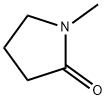

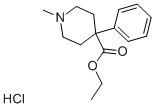
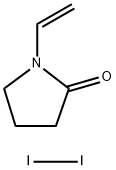
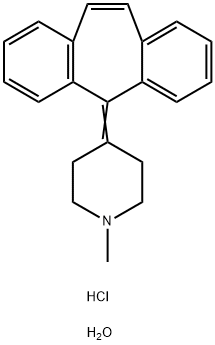

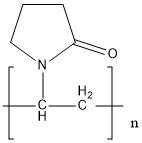
You may like
-
 6138-79-0 Triprolidine hydrochloride 98%View Details
6138-79-0 Triprolidine hydrochloride 98%View Details
6138-79-0 -
 6138-79-0 99%View Details
6138-79-0 99%View Details
6138-79-0 -
 6138-79-0 Triprolidine hydrochloride monohydrate 99%View Details
6138-79-0 Triprolidine hydrochloride monohydrate 99%View Details
6138-79-0 -
 Triprolidine hydrochloride CAS 6138-79-0View Details
Triprolidine hydrochloride CAS 6138-79-0View Details
6138-79-0 -
 Triprolidine CAS 6138-79-0View Details
Triprolidine CAS 6138-79-0View Details
6138-79-0 -
 Pyridine 99.5% HPLC /UV SpectroscopyView Details
Pyridine 99.5% HPLC /UV SpectroscopyView Details
110-86-1 -
 Dibutyl PhthalateView Details
Dibutyl PhthalateView Details
84-74-2 -
 Thiourea 99% ARView Details
Thiourea 99% ARView Details
62-56-6
